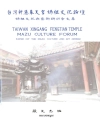Death, life, and religious change in Scottish towns c. 1350-1560 examines lay religious culture in Scottish towns between the Black Death and the Protestant Reformation. It looks at what the living did to influence the dead and how the dead were believed to influence the living in turn; it explores the ways in which townspeople asserted their individual desires in the midst of overlapping communities; and it considers both continuities and changes, highlighting the Catholic Reform movement that reached Scottish towns before the Protestant Reformation took hold. Students and scholars of Scottish history and of medieval and early modern history more broadly will find in this book a new approach to the religious culture of Scottish towns between 1350 and 1560, one that interprets the evidence in the context of a time when Europe experienced first a flourishing of medieval religious devotion and then the sterner discipline of early modern Reform.
表中的内容
Introduction
Part I: Lamenting the dead
1. How the living influenced the dead
2. How the dead influenced the living
Part II: Summoning the living
3. Communities of religion
4. The individual in the community
Part III: Subduing thunderbolts
5. Religious dissent
6. Catholic reform
Conclusion
Bibliography
Index
关于作者
Dr Mairi Cowan is a Lecturer in the Department of Historical Studies at the University of Toronto Mississauga











